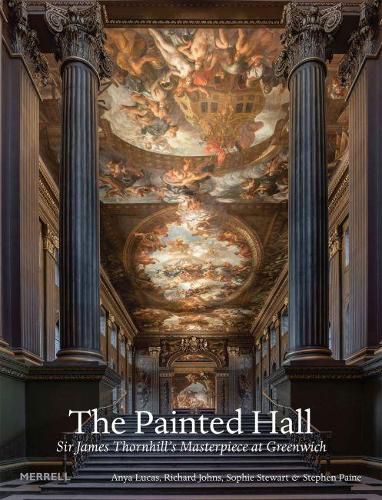Readings Newsletter
Become a Readings Member to make your shopping experience even easier.
Sign in or sign up for free!
You’re not far away from qualifying for FREE standard shipping within Australia
You’ve qualified for FREE standard shipping within Australia
The cart is loading…






Published to mark the reopening of the spectacular baroque interior of the Old Royal Naval College in Greenwich after a landmark conservation project, The Painted Hall is a wonderful celebration of what has been called ‘the Sistine Chapel of the UK’. The ceiling and wall decorations of the Painted Hall were conceived and executed by the artist Sir James Thornhill between 1707 and 1726
years that witnessed the Act of Union during the reign of Queen Anne and Great Britain’s rise to become a dominant Protestant power in a predominantly Catholic Europe. The accessions to the throne of William III and Mary II in 1688 and George I in 1714 form the central narrative of a scheme that also honours Britain’s maritime successes and mercantile prosperity. The artist drew on a cast of around 200 figures
a mixture of historical, contemporary, allegorical and mythological characters
to tell a story of political change, scientific and cultural achievements, naval endeavours, and commercial enterprise against a series of magnificent backdrops. 150 illustrations
$9.00 standard shipping within Australia
FREE standard shipping within Australia for orders over $100.00
Express & International shipping calculated at checkout
Published to mark the reopening of the spectacular baroque interior of the Old Royal Naval College in Greenwich after a landmark conservation project, The Painted Hall is a wonderful celebration of what has been called ‘the Sistine Chapel of the UK’. The ceiling and wall decorations of the Painted Hall were conceived and executed by the artist Sir James Thornhill between 1707 and 1726
years that witnessed the Act of Union during the reign of Queen Anne and Great Britain’s rise to become a dominant Protestant power in a predominantly Catholic Europe. The accessions to the throne of William III and Mary II in 1688 and George I in 1714 form the central narrative of a scheme that also honours Britain’s maritime successes and mercantile prosperity. The artist drew on a cast of around 200 figures
a mixture of historical, contemporary, allegorical and mythological characters
to tell a story of political change, scientific and cultural achievements, naval endeavours, and commercial enterprise against a series of magnificent backdrops. 150 illustrations